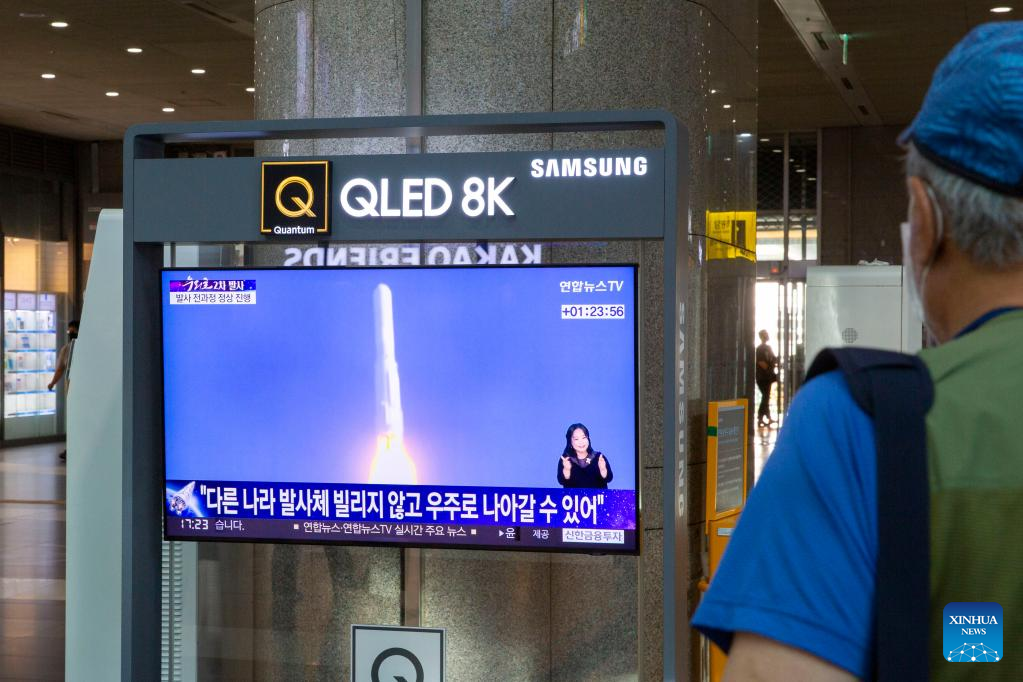
A man watches the launch of a space rocket via television at Yongsan station in Seoul, South Korea, June 21, 2022. (Xinhua/Wang Yiliang)
SEOUL, June 21 (Xinhua) -- South Korea successfully launched its homegrown space rocket on Tuesday, putting multiple satellites into the low-Earth orbit.
The Korea Space Launch Vehicle (KSLV)-II, also dubbed Nuri, blasted off from the Naro Space Center in the southern coastal village of Goheung at about 4:00 p.m. local time, live footage from the Korea Aerospace Research Institute (KARI) showed.
The three-stage space rocket flew past an altitude of 200 km after separating its fairing at about 4:03 p.m., and the third-stage booster engine stopped at 4:13 p.m. as it reached the target altitude of 700 km.
The verification satellite and the dummy satellite were separated from the booster at 4:14 p.m. and 4:16 p.m. each.
The rocket was loaded with a 162.5-kg performance verification satellite to verify the launch vehicle's capability and four cube satellites, developed by four universities for academic research purposes, along with a 1.3-ton dummy satellite.
The first Nuri test-launch was conducted in October last year when the rocket successfully reached a target altitude of 700 km but failed to put a 1.5-ton dummy satellite into orbit as its third-stage booster engine burned out earlier than planned.
The second launch was originally scheduled for last Thursday but it was postponed due to a technical glitch in the oxidizer tank sensor.
South Korea invested nearly 2 trillion won (1.55 billion U.S. dollars) for the past decade to indigenously develop the space launch vehicle capable of deploying a 1.5-ton practical satellite into the low-Earth orbit.
The 200-ton Nuri rocket, which measures 47.2 meters in length and 3.5 meters in maximum diameter, was clustered by four 75-ton-grade liquid engines in the first stage, one 75-ton-grade liquid engine in the second stage and one 7-ton-grade liquid engine in the third stage.
The homegrown space rocket development project began in March 2010, and the country successfully test-launched its indigenous 75-ton-grade liquid engine, called KSLV-TLV, in November 2018.
The KARI plans to test-launch the Nuri space launch vehicle four more times by 2027 to secure reliability.
In the long term, the KARI plans to enhance the Nuri performance to carry a 2.8-ton satellite into the low orbit by developing a higher-performance main engine of 82-ton-grade thrust.
It also aims to test-launch the enhanced space launch vehicle twice in 2029 and 2030 and secure an 830-kg moon probe launch performance by 2030. ■

People watch the launch of a space rocket via television at Yongsan station in Seoul, South Korea, June 21, 2022. (Xinhua/Wang Yiliang)



